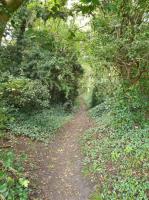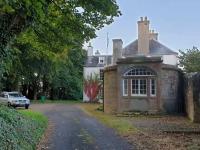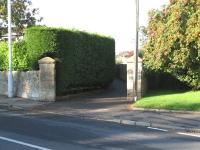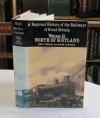Elgin Railway
Introduction
This railway was until recently open to freight only to RNAD Crombie, although the sidings within the works have been lifted.
The line was also known as the Charlestown Railway and, on extension to Dunfermline, the Dunfermline and Charlestown Railway and was one of the earliest waggonways in Scotland.
For the earlier alignment see Elgin Waggonway.
Dates
| / /1799 | Elgin Railway Acquired by the Earl of Elgin, line modified at southern end to serve limestone quarries, limekilns and the harbour. |
| / /1812 | Elgin Railway Line re-aligned from Wellwood to Charlestown Harbour with iron edge rails. |
| / /1821 | Elgin Railway Re-aligned again to avoid inclined planes, engineer; Mr Charles Landale (later the Dundee and Newtyle Railway engineer). |
| 26/05/1826 | Dundee and Newtyle Railway Act receives Royal assent, engineer Charles Landale (previously engineer to the Elgin Railway). |
| / /1834 | Elgin Railway Branch to Dunfermline Netherton opened, line re-named Charlestown and Dunfermline Railway and opened to passengers. |
| / /1853 | Victor Alexander, Lord Elgin Succeeds to the title, Trustees of the estate sell the Elgin Railway and Charlestown Harbour and let out the lime and coal business. |
| / /1856 | Elgin Railway
Halbeath Railway
Townhill Waggonway The Townhill Waggonway links the Elgin Railway to the Halbeath Railway. |
Portions of line and locations
This line is divided into a number of portions.
Elgin Colliery to Charlestown
This junction was formed when the Charlestown and Dunfermline Railway was met by the 1866 West of Fife Railway and Harbour. Both lines were single track and the signal box (dating from 1894) was in the 'V' of the junction.
...
See also
West of Fife Railway and Harbour
Kincardine and Dunfermline Railway (North British Railway)

Mark Poustie 21/09/

Mark Poustie 28/09/2020
2 of 2 images.
Dunfermline Netherton Branch
Around the time this opened the line became the Charlestown and Dunfermline Railway.

Mark Poustie 23/09/2006

Mark Poustie 23/09/2006
2 of 2 images.
Books
 A Regional History of the Railways of Great Britain: The North of Scotland v. 15 (Regional railway history series) |  The Elgin or Charlestown Railway 1762-1863 |










